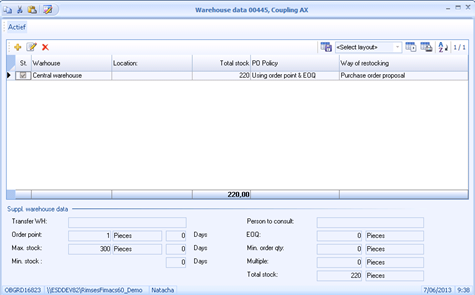Your stock under control
Good inventory management requires a balance between ensuring all components and spare parts for maintenance management are available in time and avoiding the costs of having too much and/or wrong stock.
Classification of spare parts and components
Is a component critical? Not having the spare part available has technical and financial consequences. The costs of a possible production standstill could be multiple times higher than the cost for stocking the part.What is the desired availability of the spare part for production and what is its availability at the supplier's? Can the part be easily purchased from several suppliers or does your preferred supplier have a quick lead time? What is the order value of the component or spare part? For non-critical parts with a very low value you are likely to build up a floor stock.
Especially for critical parts of which you want to make sure they are available, it is recommended to keep a stock of these parts. For non-critical parts you can anticipate that these can be purchased in time. If the supplier has an electronic catalog, you can even place your order request through the web catalog.

Not too much but not too little stock either
Running out of stock for critical parts is out of the question. Rimses can be configured so that the system monitors the stock and helps you keep stocks up. For each part, you can set up replenishment parameters for multiple warehouses allowing you to replenish your stock through purchase order proposals, work requests for custom-made articles and transfers between warehouses. A reservation horizon is used so that no useless stock is being built up.
When a work order is prepared, the spare parts can be set aside for the work to be executed. If a reservation falls outside of the reservation horizon during which parts can be replenished in time, these parts will not be taken from the available stock. This way, purchasing expensive parts prematurely can be avoided.
For periodic maintenance you can automatically have Rimses timely put aside the required parts so that these will be available when the tasks have to be executed.
Flexibility in use of units
You can manage your warehouse in the unit on the basis of which the stock is managed and delivered and place your orders in the unit of the supplier. A conversion factor is used between both units.
Central replenishment
If department warehouses are used, you can set up warehouse distribution from a central warehouse through Topping up or Double pot methods. These are procedure-based methods to avoid running out of stock by for example moving one or two storage crates when the stock is too low. You can even have Rimses suggest the optimal distribution routes for your department warehouses.
These functions are available in the products:
The product Rimses6 Fundamental only contains a limited stock function allowing data exchange with other (ERP) systems.
